AHERN, Patrick
Sergeant Patrick Ahern, 'E' Troop, died of wounds inflicted during operations on 23rd January 1945 at Maasbracht and Brachterbeek, specifically when his Troop were ordered to attack and obtain a bridgehead on the Montforterbeek Dyke.
Formed at Burley in the first week of August 1943 as 45 Royal Marine Commando, Royal Marines, from the disbanded 5th RM Battalion. Their first Commanding Officer was Lt. Col. N.C. Ries [more]. There followed hard training with those unfit or unsuitable being removed to other duties. In September the Commando moved to billets at Ayr.
On formation there were five fighting Troops - 'A', 'B', 'C', 'D' and 'E' Troops. 'F' Troop was the Heavy Weapons Troop. 'H' Troop was the Headquarters troop which included Signals and Intelligence sections , Motor Transport and Administration.
On the 26th November 1943 the Commando moved to the Commando Depot [more] at Achnacarry for their Commando course.
From Achnacarry they returned for a brief period to Ayr for some leave. Then on the 19th January 1944 the Commando moved to the Combined Training Centre (CTC) at Dorling for additional advanced training. The Chief Instructor was Major W.N. Gray, RM [more], who was later to command the unit in France, Holland, and Germany.
During this time the Commando became part of No 1 Special Service Brigade under Brigadier Lord Lovat DSO, MC [more]. This Brigade consisted of 45RM Commando and three other Commando Units, all Army Commandos - No.3 Commando, No.4 Commando, and No.6 Commando.
After about 2 weeks at CTC Dorling, the Commando moved to Eastbourne. During this period the training continued at a pace. Three troops, 'B' under Capt. N.G. Michel RM ; 'C' under Capt. J.N. Rushforth RM; and 'D' under Capt. A.A.B. Scott, RM, went to the Commando Mountain Warfare Training Centre at St Ives [more] to do cliff climbing and practice landings on rocks. 'E' troop under Capt. I.N.N. Beadle, RM, went to the Parachute Training School at Ringway and qualified as Parachutists.
On the 26th May 1944 at 0400hrs the Commando left Eastbourne by train for a Staging Camp at Southampton. Then on the 5th June 45RM Commando moved by troop carrying vehicles to Warsash where it embarked in five Landing Craft Infantry (small). At 1700 hrs the same day their craft slipped anchor and formed up in the Solent taking their place in the vast armada of craft that was shortly to cross the English Channel for Normandy.
45 RM Commando, Royal Marines, landed on the 6th June 1944 with the rest of the 1st Special Service Brigade on Sword Beach and were involved in the fighting in France until the 7th September when the Brigade was returned to England to refit. Disembarking on the 8th September at Southampton, the Commando moved to the Commando Group Reception Camp at Petworth, and later to Eastney Barracks at Southsea, and then Bexhill.
On the 14th January 1945 the Commando embarked at Tilbury Docks for Ostende, arriving the following day. From there the Commando moved forward and was involved in the operations to capture Maasbracht and Brachterbeek. It was during the latter that Lance Corporal H.E. Harden, the RAMC medical orderly attached to 'A' troop of 45RM Commando, was awarded the Victoria Cross [read more].
Read the 1 Commando Brigade HQ War Diary, January - April 1945, for more detail about operational timelines [go to war diary].
The Commando was one of the three RM Commando Units not disbanded after the war. On 31 January 1946, at Chatham, 45 embarked on board the aircraft carrier HMS Rajah for the Far East arriving at Port Said on 11 February and Singapore on 1 March. They arrived at Kowloon on 7 March.*
It was redesignated as 45 Commando Royal Marines in March 1946.
The post-war years saw the Commando deployed on operations to Palestine, Suez, Malaya, Aden and Cyprus. The Commando finally returned to the UK in 1967 after 24 years operational service abroad and moved to its current base in Arbroath in 1971.
Since then they have been deployed in Northern Ireland, and, in 1982, the Commando took part in Operation Corporate, the recapture of the Falkland Islands. In 1991 the Commando deployed to Northern Iraq on a humanitarian assistance mission and in 1994 it was dispatched to reinforce the Kuwaiti border against renewed Iraqi aggression. More recently the Commando has been deployed on operations in Afghanistan.
View our Gallery images of 45RM Commando
Click/touch 45RM Commando below for additional content, or follow the links below it to specific content entries.
Sergeant Patrick Ahern, 'E' Troop, died of wounds inflicted during operations on 23rd January 1945 at Maasbracht and Brachterbeek, specifically when his Troop were ordered to attack and obtain a bridgehead on the Montforterbeek Dyke.
Marine Denis Baker died In Germany. At the time of his death his Commando were engaged in the attack on Leese after crossing the River Weser. Son of Arthur and Alice Baker of Fiveacres Cottage, Wormley, Surrey.
Marine Leonard Baker died at sea during operations at Normandy, France. Adopted son of William and Lavina Daffern; husband of Lilian Baker, of Bedworth, Warwickshire.
Corporal Edward Beach died during operations in Normandy.
Sources
CWGC.
Registers of Reports of Deaths - Naval Ratings / National Archives file ADM 104/127.
Marine John Benson died during the period his Commando were engaged in operations at the River Aller in the vicinity of the village of Hademstorf, Germany. Son of Herbert and Beatrice Benson, of Leeds, Yorkshire; husband of Annie Benson. of Leeds.
Corporal Arthur Bidmead died of wounds at the 6th Canadian General Hospital, France. Husband of Mrs Iris Bidmead (nee Huggan) from Hawick. Father to a young child.
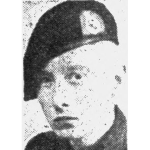
Corporal Arthur Brooks died during operations at Normandy.
Sources
CWGC.
Registers of Reports of Deaths - Naval Ratings / National Archives file ADM 104/128.
Marine Stanley Cairns died during operations at Normandy, France. Husband of Margaret Cairns of Pontypridd.
Sources
[1] CWGC.
[2] Registers Of Reports Of Deaths - Naval Ratings / National Archives file ADM104/128.
Corporal William Carter was reported missing presumed killed during operations at Normandy. He has no known grave.
Sources
CWGC.
Registers Of Reports Of Deaths - Naval Ratings / National Archives file ADM104/128.
Marine Reginald Clarke was killed whilst overcoming an enemy post as his Commando entered Osnabruck, Germany. Son of Jack and Monica Mercy Clarke, of Ashford, Kent.
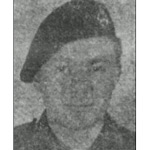
Marine Edwin Corbyn died during operations at Normandy, France.
Sources
CWGC.
Registers of Reports of Deaths - Naval Ratings / National Archives file ADM104/129.
Marine William Crompton died in Germany during operations at the River Aller in the vicinity of the village of Hademstorf. Son of James and Alice Crompton, of Bury, Lancashire.
Marine Edward Dangerfield died during operations at Normandy, France. Son of Albert George and Violet Rose Dangerfield, of Bow, London.
Sources
CWGC.
Registers of Reports of Deaths - Naval Ratings / National Archives file ADM 104/129.
Lance Corporal Osmond Davies, 'E' troop, died during operations at Normandy.
Sources
CWGC.
Registers of Reports of Deaths - Naval Ratings / National Archives file ADM 104/129.
The Story of 45RM Commando, published 1946 for veterans.
Lance Corporal Alexander Dryburgh died during operations at Normandy.
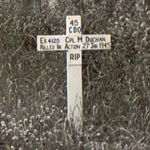
Marine Arthur Earl died during operations at Normandy.
Sources
CWGC.
Registers of Reports of Deaths - Naval Ratings / National Archives file ADM 104/130.
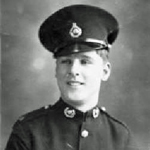
Marine Bernard Fenton died during operations at Normandy. Son of Herbert and Dinah Fenton; husband of Mary Fenton, of Londonderry.
Sources
CWGC.
Registers of Reports of Deaths - Naval Ratings / National Archives file ADM 104/130.
Sergeant William Finlay died during operations at Normandy. Son of Mr. and Mrs. William Finlay, of Scunthorpe, Lincolnshire.
Sources
CWGC.
Registers of Reports of Deaths - Naval Ratings / National Archives file ADM 104/130.
Marine Ernest Forbes died during operations at Normandy.
Sources
CWGC.
Registers of Reports of Deaths - Naval Ratings / National Archives file ADM 104/130.
Marine Ernest Gladwin was reported missing presumed died at the coast of Normandy, France. He has no known grave. Son of William Henry Gladwin, and of Nellie Rose Gladwin, of Southgate, Middlesex.
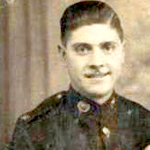
Captain Eric Grewcock, 'A' troop, died during operations at Normandy.
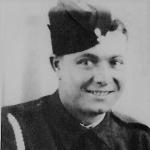
Marine George Hall died at Worthing Central Hospital, Sussex, from an accidental gunshot wound sustained during a live fire training exercise.
Marine John Hall died during operations in France.
Sources
CWGC.
Registers of Reports of Deaths - Naval Ratings / National Archives file ADM 104/131.
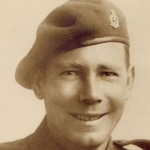
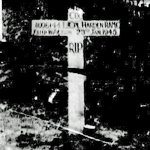
Marine Thomas Harrington from Great Cornard, Sudbury, died during operations at Normandy, France.
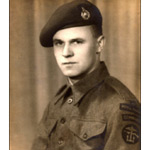
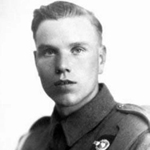
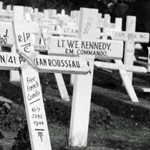
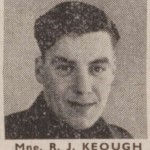
Marine Richard Keough, 'C' Troop, was killed in overcoming an enemy post as his Commando entered Osnabruck, Germany. Son of Richard and Louisa Vernon Keough, of Coventry.
Marine Frederick Kershaw died during operations at Normandy, France. Son of Sam and Linda Kershaw, of Bradford, Yorkshire.
Sources
CWGC.
Registers of Reports of Deaths - Naval Ratings / National Archives file ADM 104/133.
Marine Cyril King died during operations at Normandy, France.
Sources
CWGC.
Registers of Reports of Deaths - Naval Ratings / National Archives file ADM 104/133.
Corporal John Knott died in Germany.
Marine Gordon Lay died in Germany. At the time of his death his Commando were engaged in operations at the River Aller in the vicinity of the village of Hademstorf, Germany.

Marine Charles Lyon died during operations in the vicinity of Brachterbeek and Montforterbeek, Netherlands.
Sources
CWGC.
Registers of Reports of Deaths - Naval Ratings / National Archives file ADM 104/133.
Marine Leonard Manley was reported missing at sea presumed died during operations at Normandy, France.
Sources
CWGC.
Registers of Reports of Deaths - Naval Ratings / National Archives file ADM 104/134.
Marine Thomas Marshall died of wounds in Germany. His Commando were in action at Wesel. Son of James and Sarah Marshall, of Belfast, Northern Ireland; grandson of Mrs. I. Bateson, of Belfast.
Marine John McFatter died during operations at Normandy, France.
Sources
CWGC.
Registers of Reports of Deaths - Naval Ratings / National Archives file ADM 104/133.
Marine Nathaniel McIntosh died during operations at Normandy, France.
Sources
CWGC.
Registers of Reports of Deaths - Naval Ratings / National Archives file ADM 104/134.
Marine Daniel McKeown died during operations at Normandy, France.
Sources
CWGC.
Registers of Reports of Deaths - Naval Ratings / National Archives file ADM 104/134.
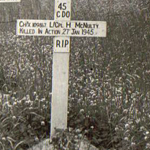
Marine Charles McPake died in Germany. His Commando were engaged in operations at the River Aller in the vicinity of the village of Hademstorf.
Marine Albert Mitchell died during operations at Normandy, France.
Sources
CWGC.
Registers of Reports of Deaths - Naval Ratings / National Archives file ADM 104/134.
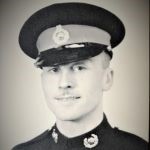
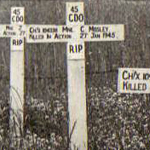
Marine William Murphy died during operations at Normandy, France. He has no known grave. Son of John and Susan Murphy; husband of Joan Murphy, of Marbury, Northwich, Cheshire.
Corporal Leslie Myers died during operations at Normandy, France.
Sources
CWGC.
Registers of Reports of Deaths - Naval Ratings / National Archives file ADM 104/134.
Sergeant Henry Nutter died during operations at Normandy, France.
Sources
CWGC.
Registers of Reports of Deaths - Naval Ratings / National Archives file ADM 104/135.
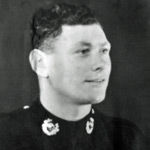
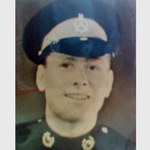
Marine William Purvis died during operations at Bell Isle, Osen, The Netherlands. Son of Alexander and Barbara Purvis; husband of Ellen I. Purvis, of Wooperton, Northumberland.
Sources
CWGC.
Corporal David Reed died during operations at Normandy, France.
Sources
CWGC.
Registers of Reports of Deaths - Naval Ratings / National Archives file ADM 104/136.
Marine James Russell, 'E' Troop, died during operations at Maasbracht and Brachterbeek, specifically when his Troop were ordered to attack and obtain a bridgehead on the Montforterbeek Dyke. Son of James and Ruby Eva Russell, of Hockley, Birmingham.
Sources
CWGC.
Lance Corporal Frederick Stallwood died during operations at Normandy, France.
Sources
CWGC
Registers of Reports of Deaths - Naval Ratings / National Archives file ADM 104/137.


Marine Dennis Sweet died during operations at Bell Isle, Osen, Netherlands. Son of Percy Oliver Sweet and Laura Sweet, of Leicester.
Sources
CWGC.
No.45 RM Commando War Diary / List of casualties Operation Bell Island II.
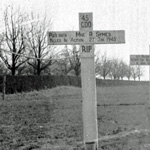
Marine Robert Symes died during operations at Bell Isle, Osen, Netherlands.
Sources
CWGC.
No.45 RM Commando War Diary / List of casualties Operation Bell Island II.
Registers of Reports of Deaths - Naval Ratings / National Archives file ADM 104/137.
Marine Kenneth Thomas died during operations in Germany. His Commando were engaged in operations at the River Weser at Stolzenau.
Sources
CWGC.
Registers of Reports of Deaths - Naval Ratings / National Archives file ADM104/137.
Marine Ronald Thomas died during operations at Normandy, France. Son of David and Ada Thomas; husband of Mary Thomas, of Paisley, Renfrewshire.
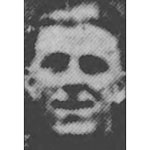
Marine Thomas Unthank died during the period his Commando were engaged in operations at the River Aller in the vicinity of the village of Hademstorf.
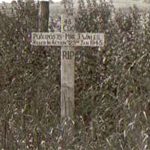
Marine James Walker died during operations at Normandy, France.
Sources
CWGC.
Registers of Reports of Deaths - Naval Ratings / National Archives file ADM 104/138.
Marine James Walter Walker, 'E' Troop, died during operations at Normandy, France.
Sources
CWGC.
Registers of Reports of Deaths - Naval Ratings / National Archives file ADM 104/138.
Marine Gilbert Watson, 'E' Troop, was killed in acion on the beach at Normandy, France. Son of David and Annie Watson, of Highfield, Co. Durham.
Corporal John Watson was reported missing presumed killed in action during operations at Normandy. He has no known grave. Son of Arthur and Hannah Isabel Watson.
Colour Segeant James Wharton died during the period his Commando were engaged in operations at Stolzenau and Leese (River Wesser crossing).
Sergeant Ronald White died during operations at Normandy, France.
Sources
CWGC.
Registers of Reports of Deaths - Naval Ratings / National Archives file ADM 104/138.
Marine Robert Whitney died from natural causes (septicemia) at West Glamorgan Hospital. Son of James and Rose Whitney, of Glyn Neath; husband of Gwenllian Whitney, of Glyn Neath.

Marine Frank Wild died during operations at Bell Isle, Osen, Netherlands. Son of George Thomas Wild and Ada Isobel Wild, of Lee, London.
Sources
CWGC.
No.45 RM Commando War Diary / List of casualties Operation Bell Island II.
Reverend Derrick Lovell Williams, M.A., had been Curate of Christchurch, Stepney, during the London Blitz and was noted for his rescue work.
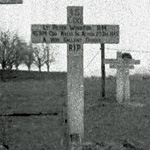
Marine Alfred Wright, 'E' Troop, died during operations at Normandy.
The citation published in the London Gazette 6th March 1945 for the award of the Victoria Cross to Lance -Corporal Henry Eric Harden RAMC attached to 45RM Commando for action in NW Europe.
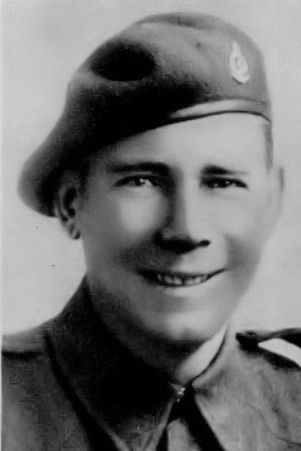
Henry Harden was born on 23 February 1912 in Northfleet, Kent. In a family of eight he was the seventh son. A keen sportsman he excelled at swimming, tennis and football at school in Northfleet where he received all of his education. Also a keen musician he played the Violin.
At the age of ten he helped out in his brother in-laws' butchers shop. He eventually became a butcher taking over the business when tragically his brother in-law died. Very early on Henry showed a keen interest in things medical and joined the St Johns Ambulance Brigade where he became a Sergeant.
As the war effort gathered pace in 1942 the 30 year old Henry Harden was conscripted into the Royal Artillery but as his medical aptitude became realized he was soon transferred to the R.A.M.C., where he served in a field ambulance unit.
Henry soon became restless with inactivity of service at home and in November 1943 he volunteered for the Commandos and was posted to the Achnacarry Commando Training Depot situated in the Highlands of Scotland. A comrade of the same intake Mne. Keith Thompson, later also of 45 RM Commando, remembers sharing billets with Harden who he says was a quiet quick witted individual with a keen sense of humour. Commando training successfully completed Harden was posted as a Medical Orderly to Able troop 45 RM Commando in January 1944.
He and the rest of the Commando commenced training for which was to become the D-Day landings.
After their involvement in the D-Day activities 45RM Commando, who along with No.3, No.4 and No.6 Army Commando formed No.1 Special Service Brigade, returned to the UK for replacements and refitting and on 6th December 1944 and was renamed the 1st Commando Brigade.
1st Commando Brigade was expecting to go to the Far East but on 7th January orders were given for them to return to NW Europe. The first action on arrival in NW Europe which involved the Brigade was ‘Operation Blackcock’. The objective was to clear the enemy from the Roermond Triangle. Attached to the 7th Armoured Brigade they were given the job of crossing the Juliana Canal and driving on through Maasbracht and Brachterbeek in order to capture the town of Linne.
On the freezing night of the 23rd of January 1945 the German forces were already in full retreat out of Maasbracht and on the same night No.6 Army Commando had successfully traversed the frozen canal and occupied the town. 45 RM Commando had pushed forward to occupy the smaller village of St. Joostburg setting up HQ in a house situated behind the local church which offered protection from incoming fire.
Able Troop of 45 Commando was ordered forward along the station road to occupy the railway station at Maasbracht. All went according to plan until the troop reached the crossroads. Here they were trapped in an ambush by the enemy forces that had set their lines at Montfortebeek. Able Troop came under intense MG and Mortar fire and were split and cut off from the main force. Some men had to lie in the freezing snow covered fields while others took cover in houses and outbuildings. Able Troops' situation was made worse by a well placed German sniper who added to what seemed to be a helpless position.
Sheltering in one of the nearby houses was the R.A.M.C. contingent and among them Doctor John Tulloch. Tulloch observing the situation, with dead and heavily wounded lying in the open fields, decided to attempt to help his comrades. He arranged for jeeps which would be protected by a Red Cross ensign to drive out and to bring back as many wounded as they could manage. The Jeeps set off on their mission and were on their way back when they came under heavy enemy fire, an action which violated the Geneva Convention, one jeep was completely destroyed and all the occupants killed. John Tulloch was awarded the MC for his valiant part in this action.
The position then was this. A part of Able troop was pinned down and had taken severe casualties. The troop’s position was exposed and was being exploited by a well placed sniper. A party under the protection of a medical ensign had attempted to extract wounded and been seriously attacked. The foregoing makes the feat of Henry Harden strikingly selfless and even more remarkable. Harden had been observing the unfolding events and still insisted that he go out and try to help and recover more of the wounded armed only with a side arm for self protection.
On all fours he scurried alone a distance of 120 metres across flat open ground while the area was being swept by heavy and concentrated fire. He calmly bound up the wounds of one officer and two marines and successfully dragged one marine to safety single handed. Whilst dragging his wounded comrade eye witnesses could see the snow flying all around from bullets one of which wounded Harden in his side.
After Hardens' initial success two other attempts to rescue the wounded were made, one by tanks and the other with the aid of a smoke screen, but both failed. Harden was ordered not to expose himself any more but despite this he arranged a stretcher party, and while carrying a white flag with a red cross went out yet again to attend his comrades. Even though the second marine was hit again while being transported and died, Harden, with stretcher bearers, went out a third time. It was while assisting an officer back to safety on this third attempt the fearless Harden was mortally wounded.
The intensity of the enemy covering fire prevented anybody recovering Harden until the next day, but Hardens' valour had inspired all around and they were able to hold and secure their positions. Enemy counter attacks were beaten off and the objective of capturing the town of Linne was eventually achieved by No.3 Army Commando. With help from tanks of the Royal Hussars they stormed the town and overcame fanatical enemy resistance.
When Henry Harden performed this courageous act he was 32 yrs old and was married with two small children.
Although Henry Harden was the only recipient of the Victoria Cross in the R.A.M.C. from the WW2 conflicts they are the third highest recipients, behind the Royal Artillery and the Royal Engineers, of the award. The R.A.M.C. are however the Regiment with the highest number of awards per capita in the British forces.
Henry Eric Harden VC is buried in the Nederweert War Cemetery Holland.
Henry Harden’s Victoria Cross is held and displayed at the Army Medical Services Museum, Aldershot.
The memorial plaque at the bridge in Montfortbeek. A slight inaccuracy on the plaque states Harden was killed on his fourth attempt. His Gazette citation however states clearly that it was in fact on his third attempt that Harden fell.
Source: National Library of Scotland website.
Commanding Officer —
2nd in Command — Act. Temp. Maj. A.L. Blake MC
Act. Tempy. Maj. I. N. N. Beadle MC.
Captains
Act. Capt. J.E. Day
Act. Tempy. Capts.
A. Armstrong
H.G. Riley MC
C.E.B. Fletcher
R.G. Shove
Adjutant
Act. Tempy. Capt. A.W. Neaves
Tempy. Lieut.
G. T. Jackson.
P. Nelson.
B. C. W. Samain.
R. Y. McDonald.
F. Tunstall.
G.F. Partington.
H.D. Howell.
D.G. Smythe.
J.R. Shaw.
P. D. Barnard, R.A.
Tempy. 2nd. Lieut.
K.C. Sellars.
W.S. Burns.
J.J.A. Patron.
A.W. Mould.
Adm. Officer - Act. Tempy.Capt —
Signal Officer —
Medical Officer — Lieut. H. N. Smith, R.A.M.C.
Chaplain — Rev. H. Kennen, R.N.V.R.
Sergeant-Major —
Notes
Highlighted names contain more information.